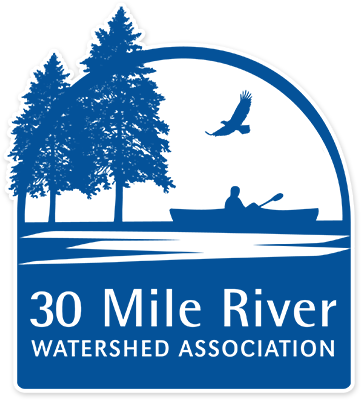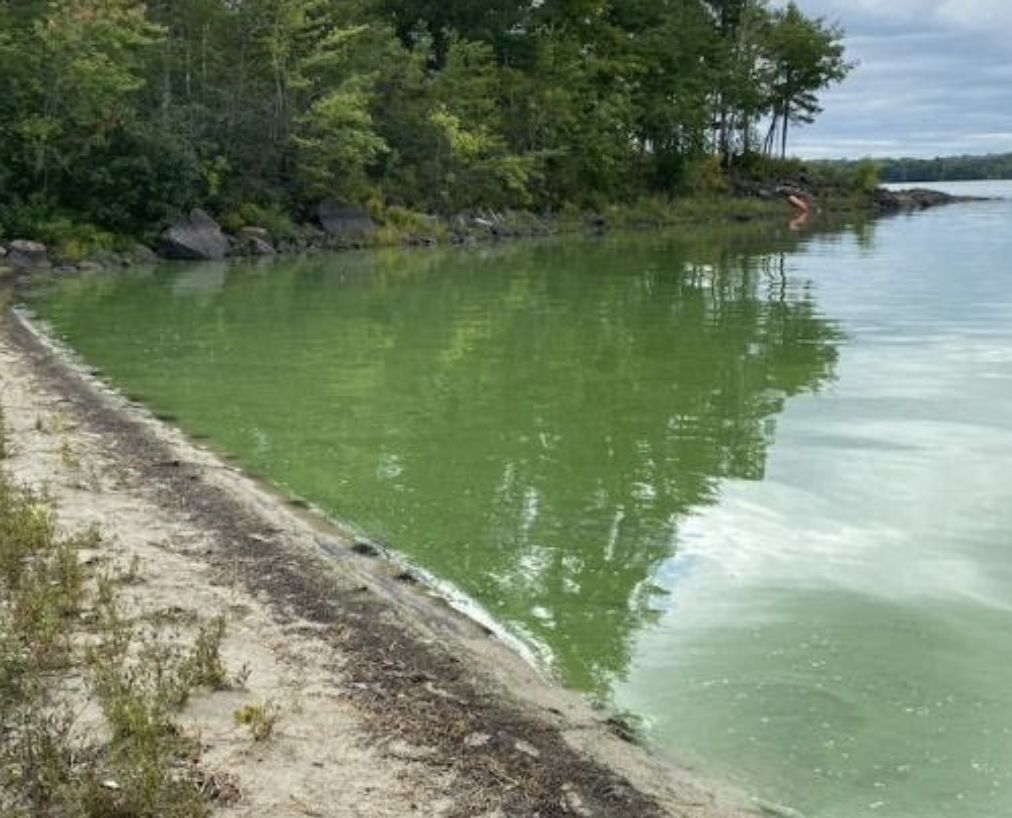In late August 2021, Androscoggin Lake saw a reduction in Secchi disk transparency (water clarity) to a depth of just under 3 meters. Water clarity has continued to decline since then, with the last recorded reading of 1.95 meters on September 29th at the deep monitoring station (Station #1) just west of Lincoln Point. 30 Mile staff and Androscoggin Lake Improvement Corporation (ALIC) water quality volunteers have been closely monitoring water quality in Androscoggin Lake this season, collecting water clarity and dissolved oxygen data on a bi-weekly rotation. Monthly water samples are also collected and analyzed for phosphorus and chlorophyll concentrations. Starting in September, water clarity readings were collected every week to more closely monitor for bloom conditions in the open waters of the lake. Photo: Localized bloom conditions near Lincoln Point beach, September 17, 2021 by Buddy Cummings.
Maine Department of Environmental Protection (Maine DEP) defines a lake-wide nuisance algal bloom as water clarity less than 2 meters. It is important to note that while conditions observed in Androscoggin Lake this season are concerning, reduced water clarity in late August and September is not uncommon for Androscoggin Lake.
Water quality data has been collected since 1971, and lake-wide bloom conditions were documented in 1999 with a minimum Secchi depth of 1.1 meters. Near-bloom conditions have been documented throughout the historical monitoring period, 10 years between 1979-2018. These and current readings are collected at Station #1. During times of reduced water clarity, algae can concentrate in coves and on downwind shorelines where localized conditions are much worse than in open water areas.
Of all the algal samples that Maine DEP has collected from Maine lakes over the past decade, there were only a few open water samples that exceeded EPA’s Drinking Water standard for the algal toxin microcystin for infants and non-school-age children. No open water samples exceeded the Recreational Standard. However, very high concentrations of microcystin have been detected in algal scums that concentrate and accumulate along the shore. Because scums that accumulate along the shore can have high toxin levels, people should not let small children play in the scums or let pets drink the water. For more information, visit Maine DEP’s Cyanobacteria web page: https://www.maine.gov/dep/water/lakes/cyanobacteria.html.
While 30 Mile and ALIC continue to monitor water quality into the month of October, we will also be working with our partners to identify the next steps needed to reduce phosphorus loading in Androscoggin Lake by combatting inputs of phosphorus from the surrounding watershed.


